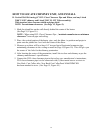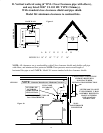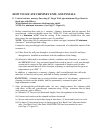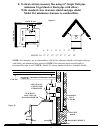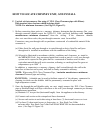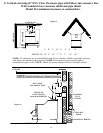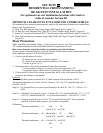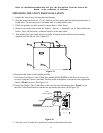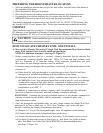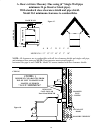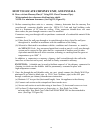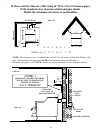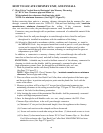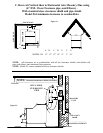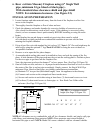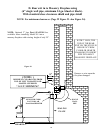
PREPARING THE ROOM HEATER LOCATION
1. Select an installation location that will give the best airflow from the front of the heater to
the remainder of the home.
2. Place the protective floor pad in position.
3. Place the unit on the pad making sure the minimum clearance specifications are met.
4. If connecting to an existing masonry flue, first ensure that the flue conforms to the
NFPA-211 Code and/or consult your local code for proper procedures.
This model is designed for connection to: any Listed 2100° UL 103 HT. TYPE chimney also
any Listed UL DVL Close Clearance Pipe. Follow pipe manufactures instructions carefully.
CHIMNEY
This room heater must be converted to (1) a chimney complying with the requirements for Type
HT chimneys in the Standard for Chimneys, Factory-Built, Residential, Type and Building
Heating Appliance, UL 103, or (2) a code approved masonry chimney with a flue liner.
CAUTION: Certain installation types require the use of certain chimney types.
Please follow these instructions exactly.
HOW TO LOCATE CHIMNEY EXIT, AND INSTALL
A. Rear exit Into Masonry Flue using (6" Single Wall Pipe minimum 24 ga. blued or black
pipe).
With standard close clearance shield and pipe shield
.
NOTE: For minimum clearances (See Page 23, Figure 17).
1. Before connecting these units to a masonry chimney, determine that the masonry flue
pass-through connector thimble meets the NFPA-211 Code and local building codes
and is a minimum of 18" from the ceiling. If the connector thimble does not meet
these codes, the pass-through connector must be modified.
Connectors may pass through walls or partitions constructed of combustible material if the
connector is
(a) Either listed for wall pass-through or is routed through a device listed for wall pass-
through and is installed in accordance with the conditions of the listing.
(b) Selected or fabricated in accordance with the conditions and clearances as stated in
the NFPA-211 Code. Any unexposed metal that is used as part of a wall pass-through
system and is exposed to flue gases shall be constructed of stainless steel or other
equivalent material that will resist corrosion, softening, or cracking from flue gases at
temperatures up to 1800
o
F.
In addition, a connector to a masonry chimney shall extend through the wall to the
inner face or liner but not beyond, and shall be firmly cemented to masonry.
EXCEPTION: A thimble may be used to facilitate removal of the chimney connector for
cleaning, in which case the thimble shall be permanently cemented in place with
high-temperature cement.
2. Once the through-the-wall thimble codes are met, simply connect the (Single Wall Pipe
minimum 24 ga. blue or black pipe or DVL Close Clearance pipe) to the wall pass-
through connector per chimney manufactures instruction.
(a) Maintain 1/4" rise per foot (horizontal length) from the appliance to the chimney.
(b) Connect each section so the crimped end faces towrds stove.
(c) Secure each section to each other using at least three (3) sheet metal screws or rivets.
(d) Use three (3) sheet metal screws to fasten pipe to New Buck Cast Collar on heater.
after New Buck Cast Collar Part# MA6CHIMCNB has been attached to stove.
(See Page 23 Figure 18).
22



